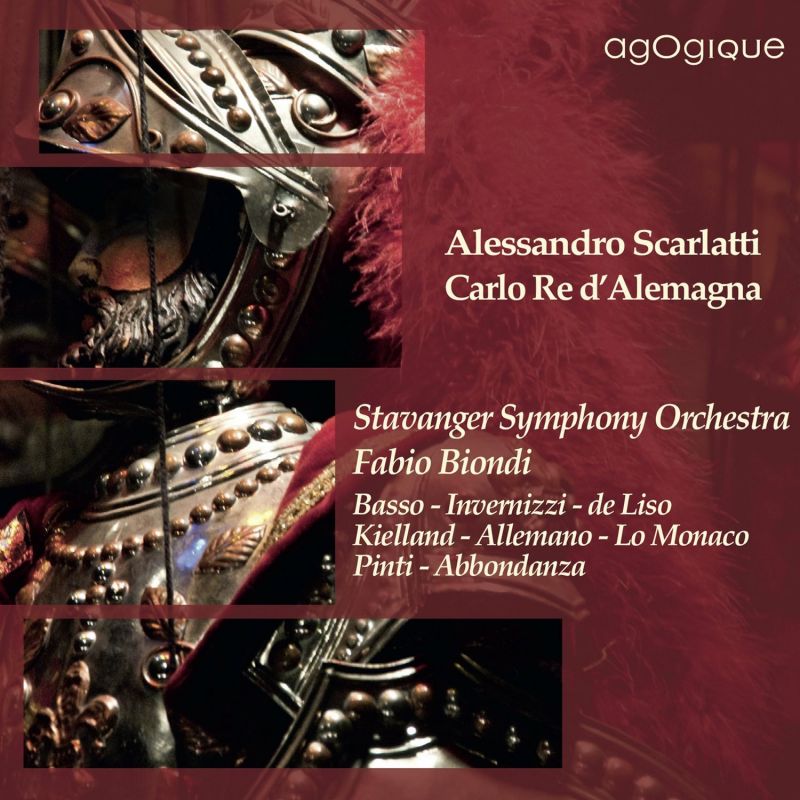SCARLATTI Carlo re d'Allemagna
View record and artist detailsRecord and Artist Details
Composer or Director: (Pietro) Alessandro (Gaspare) Scarlatti
Genre:
Opera
Label: AgOgique
Magazine Review Date: 04/2014
Media Format: CD or Download
Media Runtime: 169
Mastering:
DDD
Catalogue Number: AGO015

Tracks:
| Composition | Artist Credit |
|---|---|
| Carlo re d'Allemagna |
(Pietro) Alessandro (Gaspare) Scarlatti, Composer
(Pietro) Alessandro (Gaspare) Scarlatti, Composer Carlo Allemano, Berardo, Tenor Damian Pinti, Amilla Fabio Biondi, Conductor José Maria Lo Monaco, Asparando, Mezzo soprano Marianne Beate Kielland, Adalgiso, Mezzo soprano Marina De Liso, Gildippe, Mezzo soprano Roberta Invernizzi, Giuditta, Soprano Roberto Abbondanza, Bleso, Baritone Romina Basso, Lotario, Mezzo soprano Stavanger Symphony Orchestra |
Author: David Vickers
Notwithstanding some mercurial quirks, Fabio Biondi ensures that the modern-instrument Stavanger Symphony Orchestra play in a competent Baroque style. Marianne Beate Kielland excels in Adalgiso’s numerous tender love arias and the lament ‘Se la bella tortorella’ (a reaction to his father’s wrath). Romina Basso’s limpid lyricism in ‘Aure voi che, susarrando’ suggests that Lotario has a sensitive side, which contrasts neatly with the bellicose response of the true villain Asprando (‘Già il mio cor di fede’, a concise trumpet aria sung brilliantly by Josè Maria Lo Monaco). Giuditta’s emotional distress in Act 2 is characterised compellingly by Roberta Invernizzi: she bids farewell to her infant son Carlo as she sends him into hiding (the anguished ‘L’innocenza in te vegg’io’), but the drama rapidly intensifies when she discovers she has sent him into a perilous trap; the animated vengeance aria ‘Miei fidi a vendetta’ breaks down into icy slower passages in which she imagines she sees the ghost of her son. Basso’s agile divisions are superb in Lotario’s furious ‘Tiranno, sì’, at which point the character seems beyond the reach of reason, but there is sublime clarity when he eventually recognises the virtue of his defiant son in ‘Riede quest’alma in calma’. Scarlatti’s lighter touch for Neapolitan comedy is also evident in scenes for the flirtatious servants Bleso and Armilla that conclude each act.
Discover the world's largest classical music catalogue with Presto Music.

Gramophone Digital Club
- Digital Edition
- Digital Archive
- Reviews Database
- Full website access
From £8.75 / month
Subscribe
Gramophone Full Club
- Print Edition
- Digital Edition
- Digital Archive
- Reviews Database
- Full website access
From £11.00 / month
Subscribe
If you are a library, university or other organisation that would be interested in an institutional subscription to Gramophone please click here for further information.




